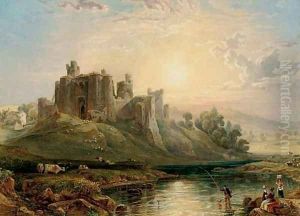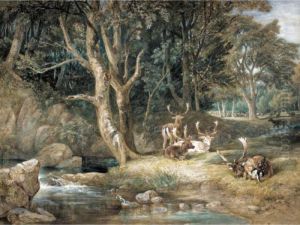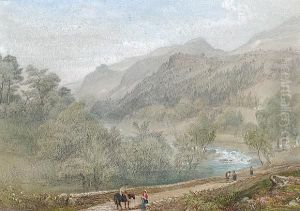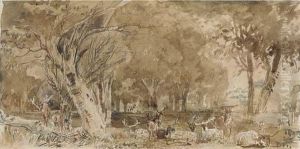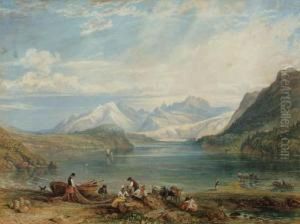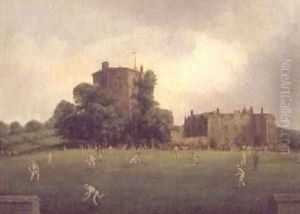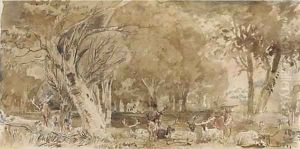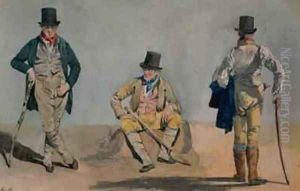William Andrews Nesfield Paintings
William Andrews Nesfield was a British landscape architect and watercolour painter born on September 2, 1793, in Chester-le-Street, County Durham, England. Initially embarking on a military career, he served in the British Army, fighting in the Peninsular War. However, after retiring as a captain in 1816, Nesfield's interests shifted towards the arts.
Nesfield's passion for painting blossomed, and he became renowned for his watercolour landscapes, which often featured historical or rustic scenes. He exhibited at the Royal Academy and the British Institution, garnering acclaim for his artistic talent.
In the 1830s, Nesfield's career took a pivotal turn when he began to focus on landscape gardening. His background in watercolour painting influenced his designs, as he skillfully applied principles of composition and perspective to the planning of gardens and parklands. He became one of the most sought-after landscape gardeners of the Victorian era, working on numerous prestigious projects.
Throughout his career, William Andrews Nesfield collaborated with prominent architects and peers, such as Anthony Salvin and John Nash, to create harmonious relationships between the landscapes he designed and the architecture they complemented. His work often featured formal terraces, water features, and intricate parterres, all characteristics that defined the grandeur of the Victorian garden style.
Nesfield's most notable works include the gardens at Castle Howard and Kew Gardens. His influence extended to the layout of Regents Park in London and the design of the grounds at Witley Court in Worcestershire, among others. His style was characterized by a bold use of symmetry and geometric shapes, influenced by his military background and artistic sensibilities.
William Andrews Nesfield passed away on March 25, 1881, in Brighton, England. His legacy as a landscape architect continues to be celebrated, with many of his gardens preserved and enjoyed by the public today. His contributions to the art of landscape gardening have cemented his place in the history of British landscape design.
